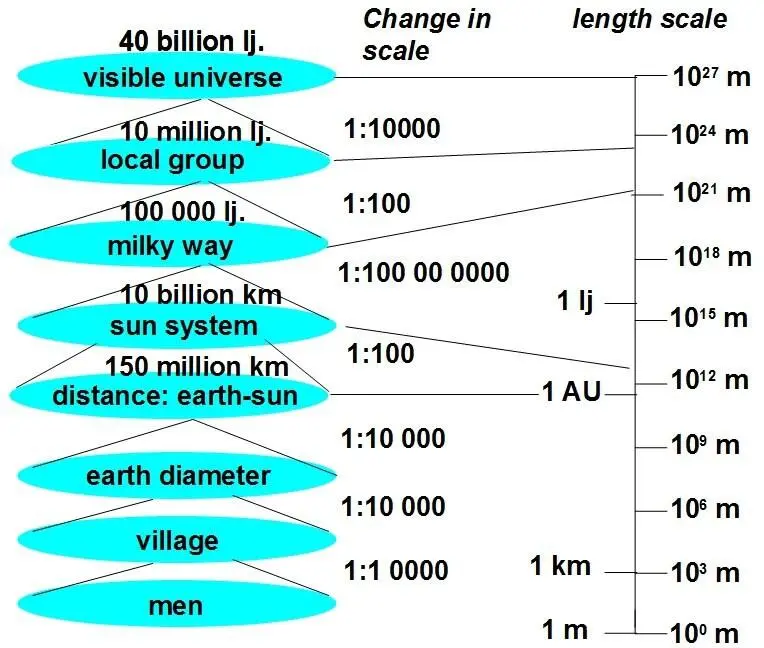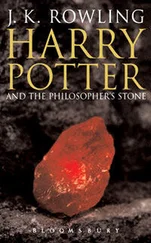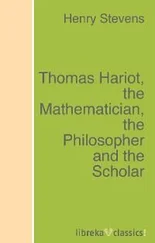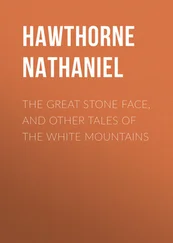“The last time we met,” Professor Wood began, “we were examining this chart. I just wanted to recount a couple of things before we move on to another aspect of modern science.”
Marie took this indication of a limited discussion of particle physics to be a hopeful beginning to the day’s lecture.
Professor Wood continued. “First, the nuclear forces that are represented by the two bosons on the right half of the figure only act over very short distances. That, in part, is why nuclei are so small. These are the forces that are involved with the radioactivity that we spoke about last time.
“Second, the baryons are built up of three quarks.
“Third, there are three generations of quarks, each having two ‘flavors’: up, and down ; strange and charm ; and bottom and top . “I bring this up with you today mainly to point out how frequently the number three tends to show up in modern physics.”
Professor Wood looked expectantly at the two students. He fixed his gaze on Helen.
“Okay,” Helen said finally. “That does remind me of Plato’s idea that the atoms proposed by Democritus should be constructed of nothing but triangles, three-sided figures. But the number three had also a divine meaning to the ancients. I remember how important the number three was in the writings of Hermes Trismagistus whose very name means Thrice Great . He described himself as ‘wearing three hats,’ as we would say today. Later writers described him as having been a ‘Priest, Philosopher and King.’ Pythagoras was among his students. Isaac Newton translated some of his writings into English. But historians are uncertain as to whether he actually existed or if his ‘works’ were a compilation of three other writers. According to the Wikipedia entry that bears his name, the mystical Thrice-Great Hermes claimed that he knew the three parts of the wisdom of the whole universe and that the three parts of the wisdom were alchemy, astrology and theology .”
“Today, we might say that these three parts of knowledge are theology, philosophy and science ,” Professor Wood added. “Apparently Hermes felt that religion should be based upon the wisdom of the alchemists and the secrets of the stars. I intentionally renamed and re-ordered his list to match the traditional faculties at classical universities. There, even now, these faculties refer to our individual mental development. As children we start out believing everything we are told. Later, we question what we are taught and want to know ‘why?’ Once we reach puberty, we begin to look more critically at our environment.”
“From what I hear on the news,” Marie said, “a lot of people never make it to that last phase.”
Professor Wood chuckled at Marie’s comment before asking Helen if she had any other insights to share with them.
“Along those lines,” Helen added, thinking about what Professor Wood had said about Hermes Trismegistus’ characterization of the three parts of the wisdom, “I have heard it said that ‘Doubt is the beginning of wisdom.’ That would support your rearrangement of the three terms I found in Wikipedia. I can also appreciate updating Hermes’ term of astrology to today’s science of astronomy . On the other hand, there are obviously still many people who have stuck with older practice.”
“That’s part of what I meant,” Marie said. “That, and the way some people still hold on the biblical version of creation and many other ideas that they believe are ‘fundamentally true’ despite scientific evidence to the contrary. But, I think I interrupted you, Helen. I believe that you might have had something else to say of the persistence of the number three in Christian dogma.”
Helen nodded. “One 10th century source suggested that Hermes ‘was called Trismegistus because of his praise of the trinity, saying there is one divine nature in the trinity'. That was interpreted by some theologians to be the same Trinity that is still a keystone of the Christian religion today in the form of the Father, the Son and the Holy Spirit. The Christian dogma also mentions the three Holy Kings who visited the baby Jesus. Sometimes God is represented in Christian paintings by a triangle with an eye. I’m sure that there are many other reflections of the number three in the esoteric branch of alchemy.”
The professor nodded. “Yes,” he said. “And some of these spiritual triads are still important to some modern scientists as well, even if they don’t take the story of Adam and Eve to be factual.”
Professor Wood paused for a moment as he scanned the diagram with the massive particles and the forces.
“Oh, oh, here come more elementary particles,” Marie thought to herself.
Noting the look on Marie’s face, the professor announced, “We don’t really need to worry about quarks and gluons right now, or even with the leptons for that matter, except to say that many of these particles were first observed in cosmic rays coming to us from outer space. It is possible that even more elementary particles will be found as our research takes us to even smaller dimensions on the way to the smallest meaningful length.”
This was music to Marie’s ears. “You mean the Planck length of 10 -35meters, right,” she said hoping to put the discussion of subatomic particles to rest for the foreseeable future.
“Yes,” said Professor Wood. “By the way, Marie, have you read anything about the search for the Higgs Bosonand the recent experiments with the Large Hadron Colliderat CERN?”
“I have read some popular articles about it in the newspaper, but I really didn’t understand them. Is the Higgs Boson important to our search for the quintessence?” Marie asked, still trying to steer the conversation away from elementary particles.
“We don’t really need it,” the professor said sensing a hint of anxiety in Marie’s voice. “I just wanted to point out that if we look in the direction of the whole universe, into the macrocosm, we are likely to meet some of these particles again.”
“Speaking of the universe,” Professor Wood said, abruptly changing the subject. “Have you ever tried to imagine how big the universe is? It is useful to scale the huge distances that we know about in the same sort of way that we scaled the very small distances within the atom. As you know, we measure ordinary distances on Earth with units that are meaningful to our bodies and our lives. We talk about distances comparable to our fingers, our feet, our forearm, or our stride. To be more precise in our communication, in science today, we use multiples and fractions of the standard meter.
Neither student was surprised to see the professor return to his stack of charts and illustrations. “Take a look at this,” he said. ( Figure 17).

Figure 17: The macrocosm with typical diameters 10
“In describing the extra-terrestrial space in and around the solar system, we take the distance from Earth to the sun to be a special, natural unit. We refer to it as one astronomical unit (AU), or about 150 billion meters. You may have memorized this distance in grammar school as ninety-three million miles. You may also know by now that this distance is tiny in relation to the distance the light travels in a year. That distance, a light year (ly), is roughly 10 16meters! But astronomers also say that they observe galaxies in the universe that arose shortly after the creation of the universe, 13 billion years ago. The light from these stars must have traveled a distance of over 10 26meters to get to us now!”
Читать дальше













